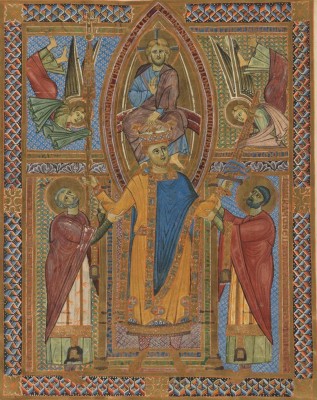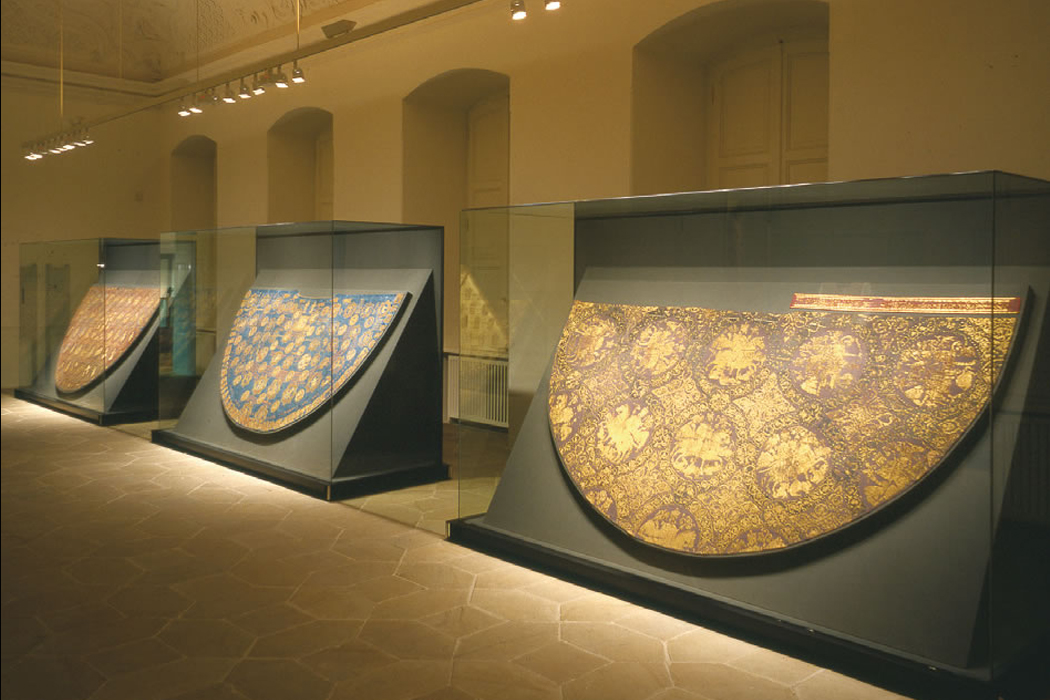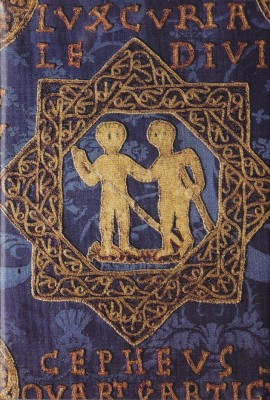The 11th century Imperial Robes in Bamberg are some of the oldest preserved royal garments. New research project aims to understand their original look.
In the Cathedral Treasure in Bamberg are kept some of the most precious textiles in the history of Europe: an ensemble of imperial clothes from AD 1002 – 1024, which used to belong to the Holy Roman Emperor, Henry II and his queen Cunegunda. The collection in Bamberg encompasses their imperial mantels, the belt of Cunegunda (Kunigunda), the papal vestments of Clemens II († 1047), the so-called “Gunthertuch”, a Byzantine silk tapestry from the 11th century, a “Passion- Teppich” (ca. 1500), plus numerous other liturgical vestments.
The early textiles were probably part of the rich endowment of relics and reliquaries, liturgical artefacts, and manuscripts, which were donated by the imperial couple when they founded the diocese of Bamberg in 1007. To this collection also belonged several precious books, which were made in Fulda, Regensburg, Reichenau and Seen. They are now in the possession of the Bavarian State Library together with other precious artefacts, which were expropriated at the beginning of the 19th century.
One of the unique treasures is the Star-Cope ( Sternenmantel) which is generally believed to have been a gift to the emperor presented by Ismahel, Duke of Bari in 1020, when he visited Bamberg and where he died. The mantel combines star motifs with zodiacal signs associated with Christ and the Virgin. At the bottom of the cope is an embroidered text, which might originally have sounded like this: “O DECUS EUROPAE CESAR HEINRICE…”. Later in the twelfth century, when the emperor and his queen were both sanctified, the textiles were turned into relics, which could be touched. From 1453 to 1455 this resulted in the “need” for a major “restoration” of the cope, whereby the original embroideries were cut out of the original cope made of purple silk and pasted onto the present blue silk damask with a weave of pomegranates. Until now it has been generally agreed that the transfer happened without major alterations. Detailed studies by Tanja Kohwagner-Nikolai have argued that the embroidered inscriptions were changed significantly to “reinvent” the image of the royal couple. Exactly how and when this was achieved cannot be decided without detailed technical analyses of the textiles.

Another such example is the changes, which were made to the so-called Chormantel of Cunigunda. This cope was perhaps an original gift from the Byzantine emperor to Henry II. Close inspection by Warren T. Woodfin has demonstrated that the embroidered portraits on the cope might have represented Byzantine emperors. Perhaps in the eleventh century the diocese – or the Emperor? – decided to change the identification of the portraits into those of Henry II. This was done through embroidering inscriptions beneath the portraits. It is believed that the cope was used to cover the bier or at least his tomb, thus purposefully identifying Henry II as an emperor par excellence and in his own right. The embroidery was perhaps carried out in one of the three nunneries in Regensburg.
During the last millennium, the imperial textiles thus underwent numerous cuts, alterations, and repairs. Observations suggest that some of these interventions began in the 11th century and profoundly changed the outlook of the original compositions, which was intended. Others were perhaps the result of later interventions.
The many questions concerning the original textiles – what they looked like, how they were made, design etc. are being raised in connection with a huge three-year research project, Kaisergewänder im Wandel, which was recently launched. More precisely the following questions will direct the researchers:
- What changes were made to the textiles at what point?
- Is it possible to reconstruct the original design?
- Who were the original artists?
- What changes in the meaning of the textiles took place?
The project will involve a series of state-of-the-art scientific studies – under microscopes, analysing microscopic samples of the material to determine the metal and the colours, the question of exact dating etc.
The project is estimated to run from October 2015 – September 2018. The project is paid for by DGF (Deutsche Forschungsgemeinschaft).
The project is coordinated by Prof. Dr. Stephen Albrecht and Dr. Tanja Kohwagner-Nikolai.
SOURCE:
Kaisergewänder im Wandel – Goldgestickte Vergangenheitsinszenierung
READ MORE
Gekrönt auf Erden und im Himmel – das heilige Kaiserpaar Heinrich II. und Kunigunde
Ed. by Norbert Jung und Holger Kempkens
Series: Veröffentlichungen des Diözesanmuseums Bamberg, Band 26
ISBN 978-3-931432-34-8
O Decus Europae Cesar Heinrice? Die Saumumschrift des sogenannten Bamberger Sternenmantels Kaiser Heinrichs II.
By Tanja Kohwagner-Nikolai
In: Archiv für Diplomatik, Schriftgeschichte, Siegel- u. Wappenkunde, hrsg. v. Walter Koch und Theo Kölzer, 60 (2014) S. 135-164.
Presents given and Presence Subverted: The Cunegunda Chormantel in Bamberg and the ideology of Byzantine Textiles.
By Warren T. Woodfin.
In Gesta Vol. 47, No. 1 (2008), pp. 33-50
The Uta Codex: Art, Philosophy, and Reform in Eleventh-Century Germany
By: Adam S. Cohen
Pennsylvania State University Press. 2000
Die Kleidung nach Quellen des frühen Mittelalters. Textilien und Mode von Karl dem Großen bis Heinrich III
von Mechthild Müller
Series: Reallexikon der germanischen Altertumskunde
Gruyter 2002
ISBN-10: 3110172194
ISBN-13: 978-3110172195
FEATURED PHOTO:
Exhibition of the mantels in the Diocesan Museum in Bamberg. © Bamberg Diözesanmuseum

